AYUTTHAYA (Day 11 - part 1)
It was still dark out as we made our way to the sky train. We then caught the metro to the train station and bought a third class ticket to Ayutthaya (pronounced (eye - U - tea - uh).
Ayutthaya was the capital of Siam (the country's name until 1939 when it was changed to Thailand). Built in 1350, it was mostly destroyed by the Burmese in 1767.
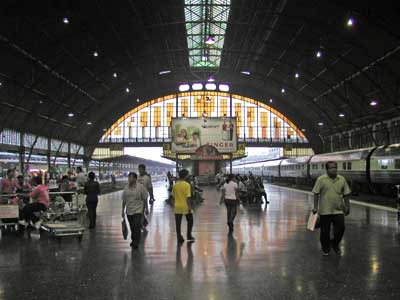
Train station
When the ticket taker came by, he told us we were in second class seats (individual, cushy), so we were bumped down five feet to third class with bench seats. These were actually wider but by now everything had filled up. Vendors walked through the train with a loud irritating calling song and carrying EXTREMELY smelly dried fish on a stick.
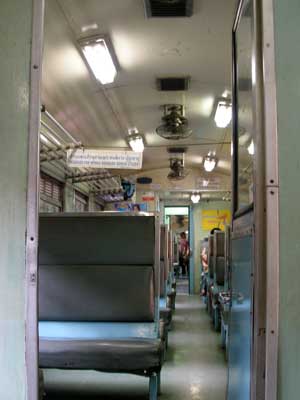
We arrived at 8:45 am and took the ferry across the river.

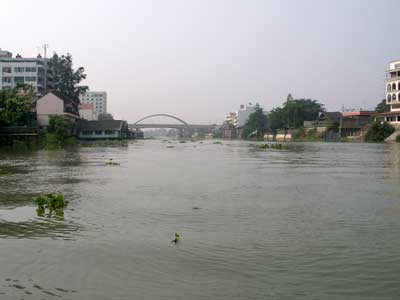

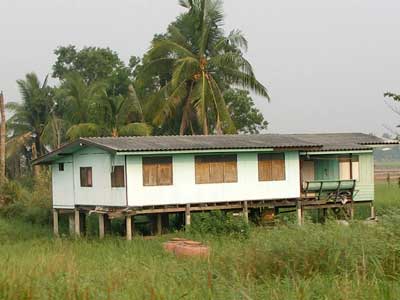
Many things were built on stilts.
It was a very very long, very very hot walk across town to Wat Maha That (or the Monastery of the Great Relic). It was built sometime in the late 1300s. Originally, it was probably fully surrounded by canals and moats. When the city fell to the Burmese in 1767, the monastery was set on fire.
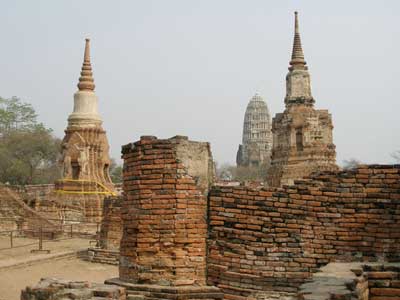
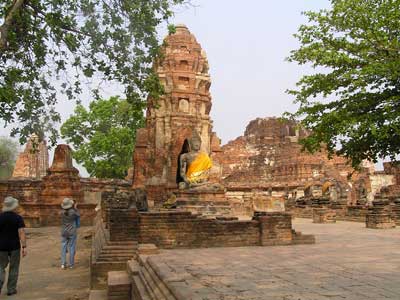
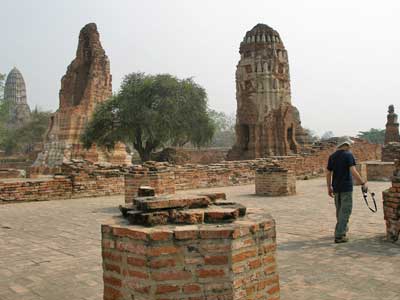
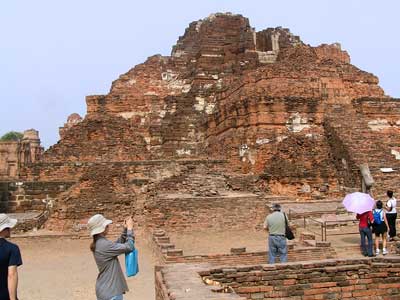
Base of the main prang (on the right). It collapsed in 1904.
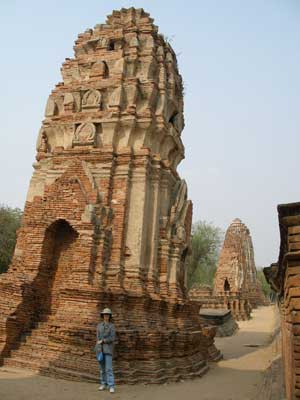

The stockier, corn cob texture, thin prangs (left) were common features of Khmer religious architecture.
A stupa (right) is basically a smooth, rounded dome filled with holy relics from the Buddha, kings, monks, etc. A stupa is often also called a "chedi" here in Thailand, a "chorten" in Tibet, and a "pagoda" in Japan.
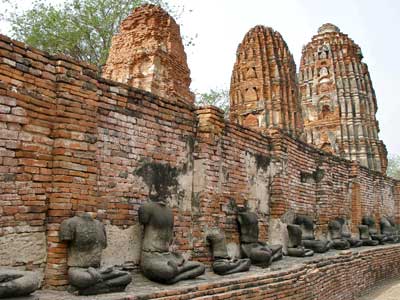
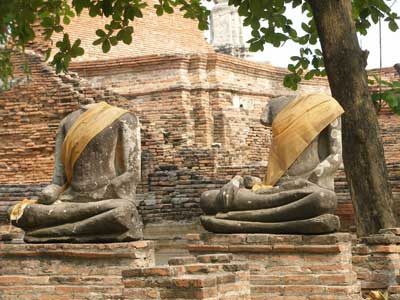
Rows of headless Buddhas
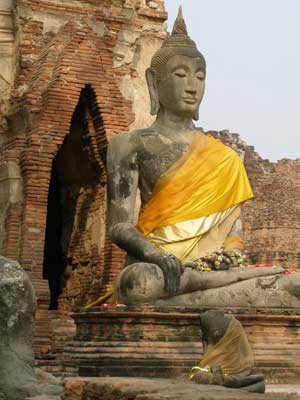
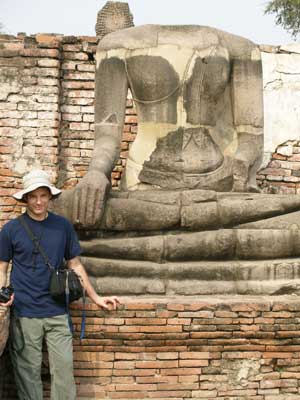
As you will start to notice, many of the Buddha statues are draped or wrapped with a yellow (or saffron) cloth. In a tradition that started centuries ago, the robes serve more as an object of reflection (to constantly remind oneself of their chosen path) than a uniform.
Yellow and orange were chosen because that was the most common dyes available at the time... from ochre clay, jackfruit wood, leaves, etc. In the early years, monks would make their own robes from scraps of cloth they found in the trash or in cemeteries and they'd dye them themselves.
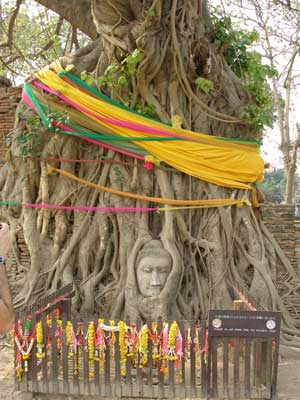
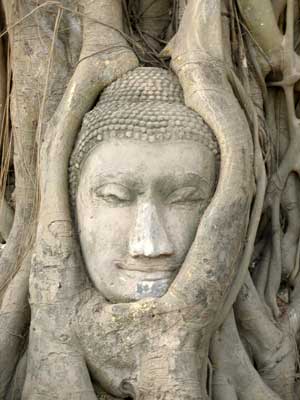
Many years ago, a statue was destroyed. The head fell to the ground and became surrounded by roots.
Wat Ratcha Burana (the Monastery of the Royal Repairs) was a Buddhist temple. It was founded in 1424 by King Borommarachathirat II (of the Ayutthaya Kingdom). He built it on the site where his two older brothers had battled each other to be the next king after their father had died. Mounted on elephants, both had become severely wounded and died.
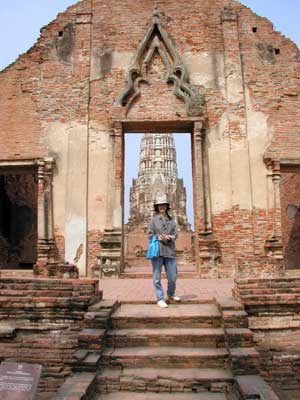
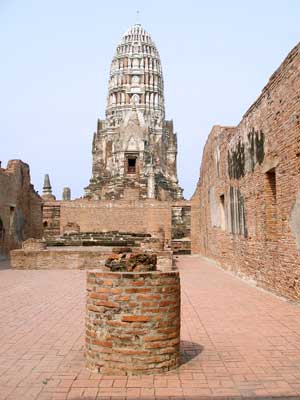
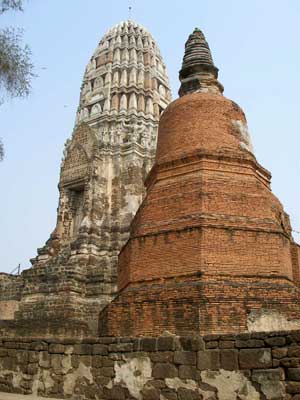
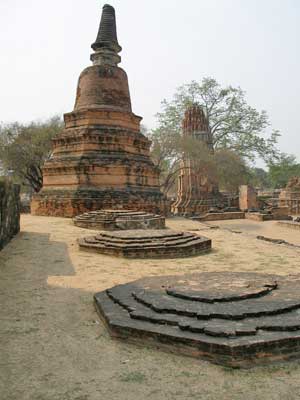
Prangs and chedis

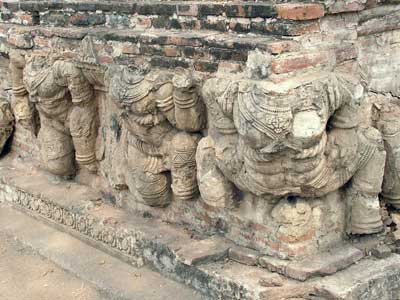
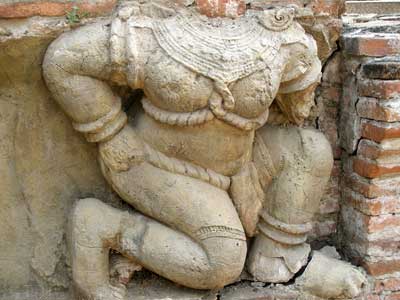
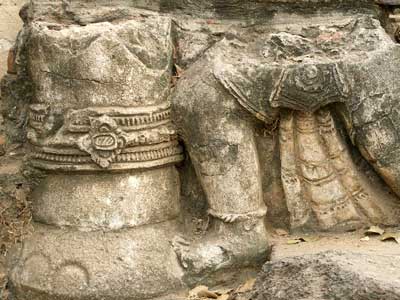
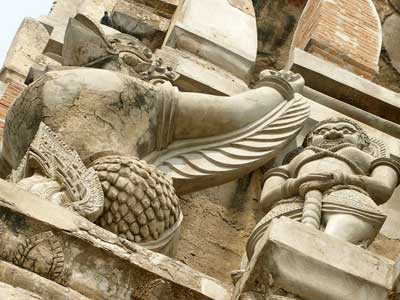
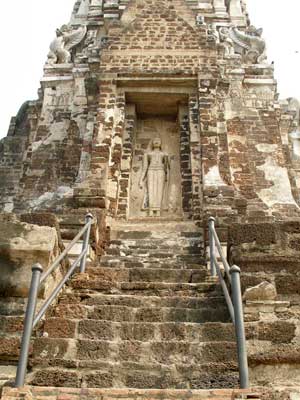
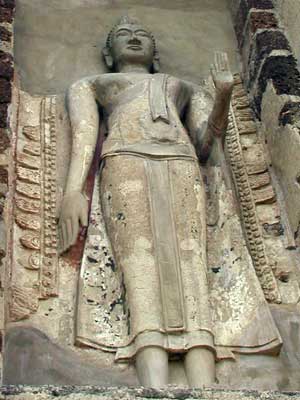
We were allowed to climb up into the main prang. The stairs downstairs were exceedingly steep and narrow! It was very humid, with no breeze... and no natural light either. There wasn't too much on the third (top) and second levels, but on the lowest level was a super tiny room covered with faded paintings of birds in red, yellow and purple. It was probably the work of Chinese artists who settled in Ayutthaya.
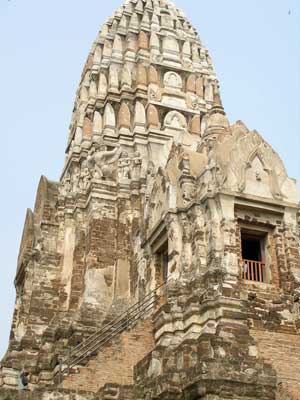
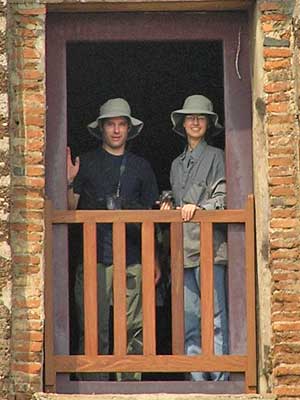
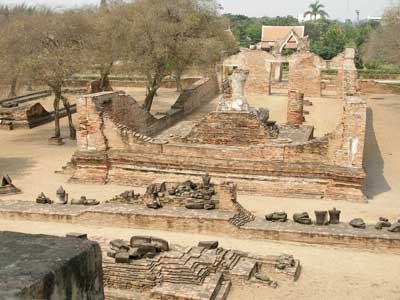
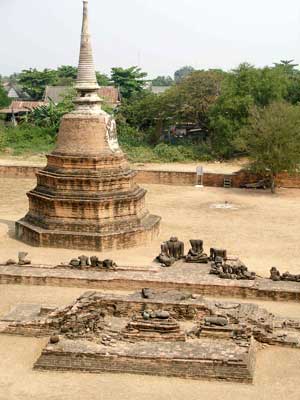
View from the prang
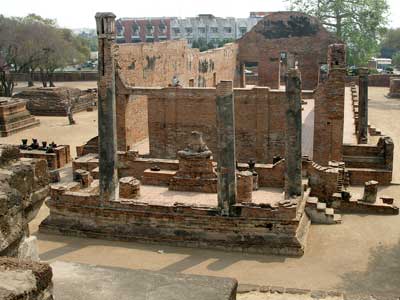
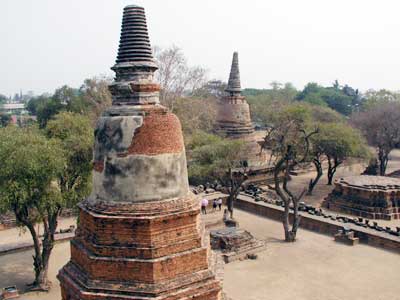
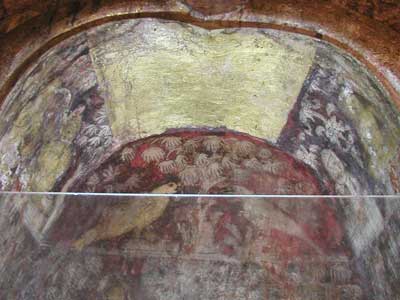
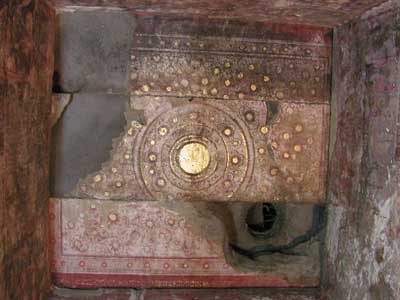
Interior paintings of the lower chamber
We walked through the small Wat Suwandawas.

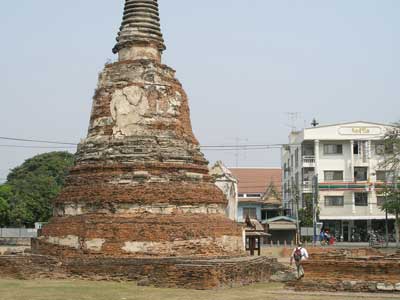
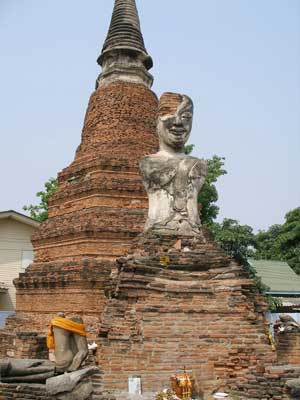
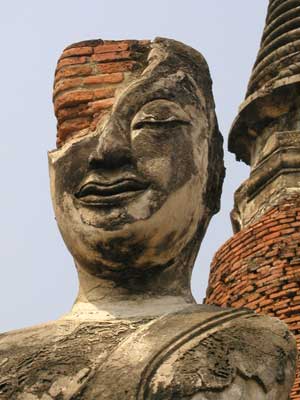
We then strolled through Rama Public Park with its many lovely arched bridges.
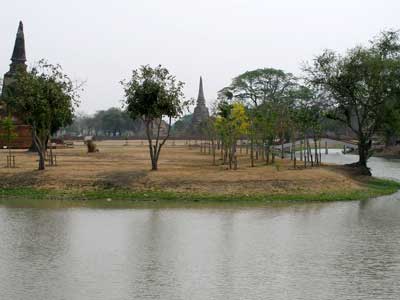
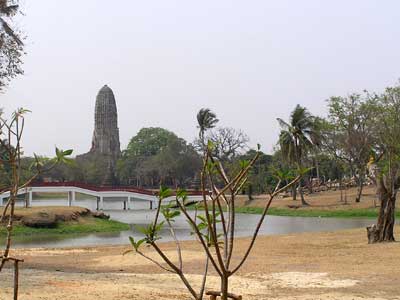
View of the prang at the adjacent Wat Phra Ram
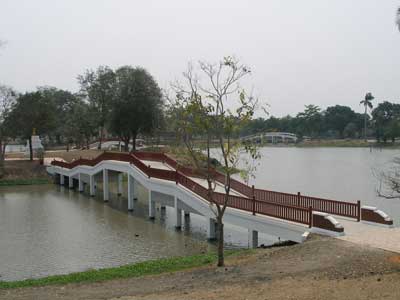
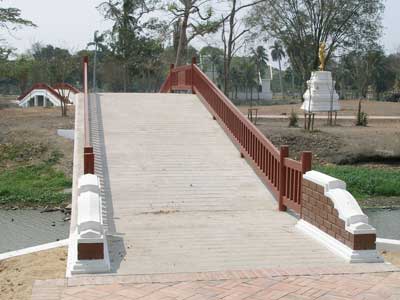

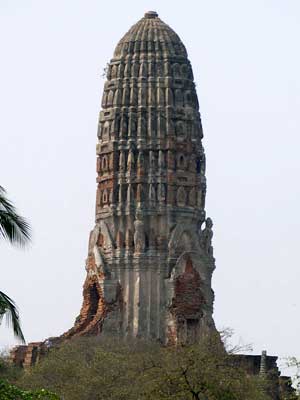
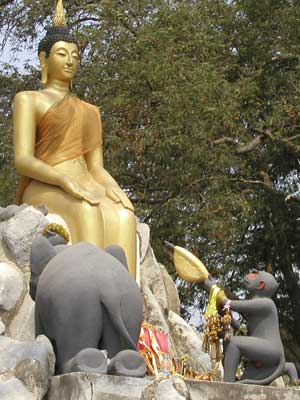
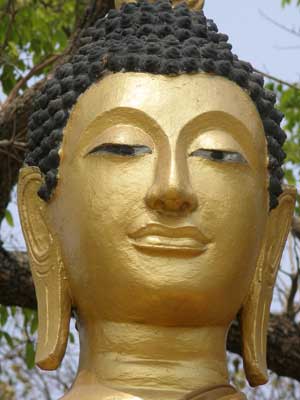
Yet another image of the Honey-offering ceremony with the monkey and elephant.
We walked across the street to Wat Thammikarat. It was most likely built before the city was founded in 1351 and is connected to the ancient Khmer settlement of Ayodaya. It was restored several times.
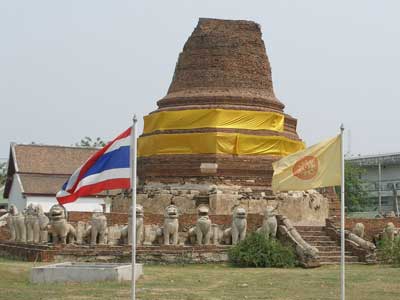
The Thai flag (on the left) symbolizes the monarchy (blue), nation (red) and Buddhism (white). The Buddhist flag (right) displays the Dharma wheel (the wheel of Buddhist Law, the endless cycle of birth and rebirth). Also note the huge saffron sash.
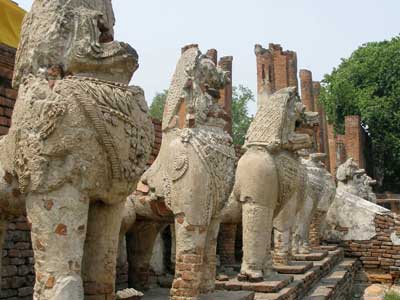
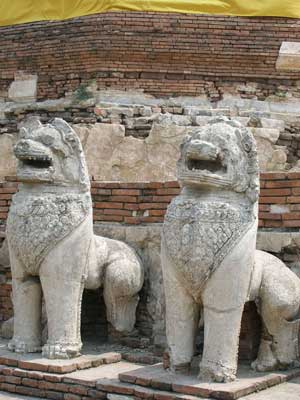
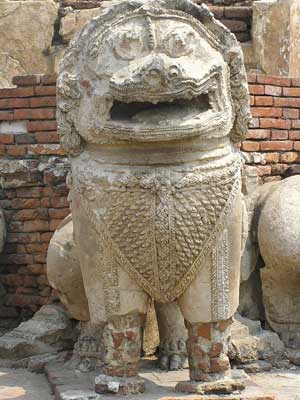

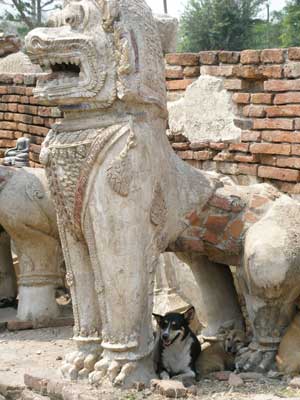
As we strolled around the deteriorating chedi, we were greeted by a pack of puppies. Mom tried to keep cool in the shade.
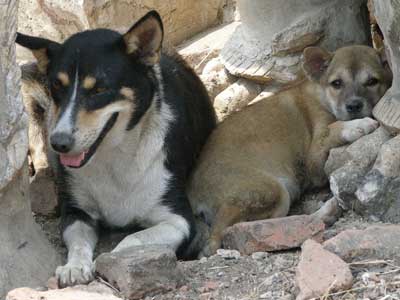

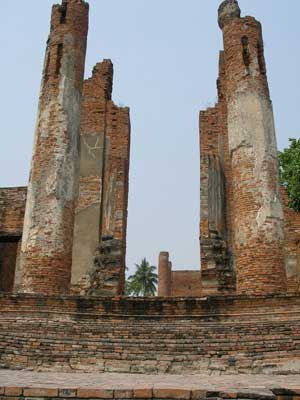
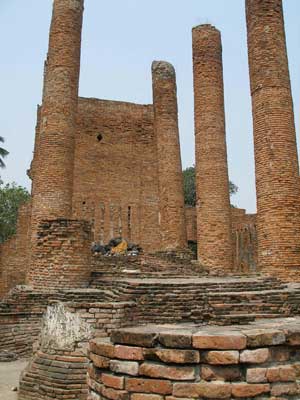
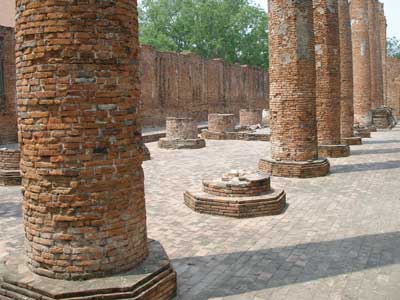
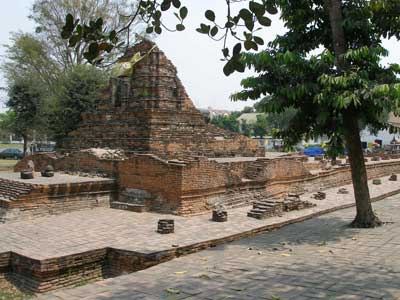
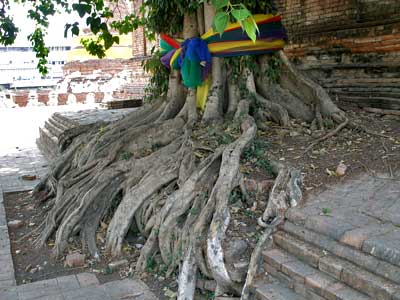
Roots begin to take over.
return • continue

